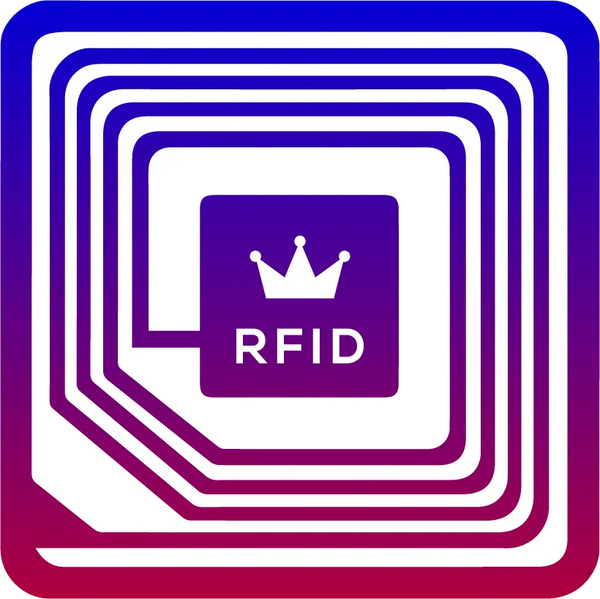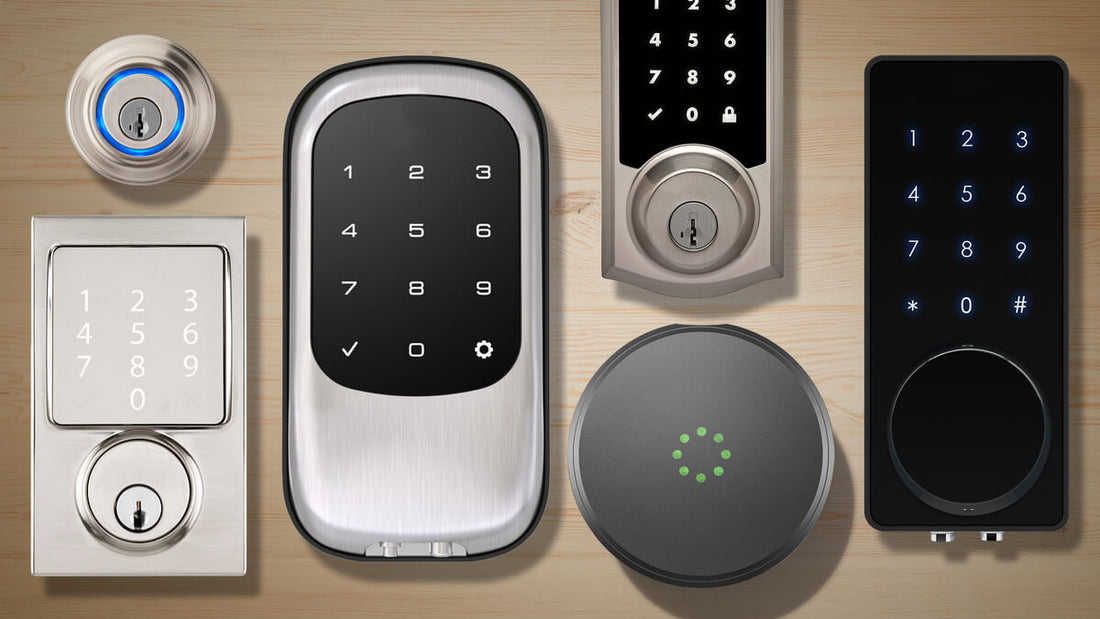In an era where technology continues to reshape the way we live, smart locks have emerged as a revolutionary solution in the realm of home security. These advanced locking systems leverage the power of connectivity, automation, and cutting-edge encryption to provide homeowners with a heightened sense of control and convenience. This article delves into the utility of smart locks, exploring their features, benefits, and potential impact on the future of home security.
Understanding Smart Locks

A. Definition and Functionality
Smart locks represent a significant departure from traditional lock and key mechanisms. At their core, smart locks are electronic devices designed to secure doors using wireless technology. These locks can be controlled remotely through smartphones, tablets, or other connected devices. The primary functionality includes unlocking and locking doors, monitoring access, and integrating with other smart home systems.
B. Key Components and Technologies
1. ConnectivitySmart locks leverage various connectivity options, such as Bluetooth, Wi-Fi, or Zigbee, to communicate with other devices and platforms. This enables users to remotely control and monitor their locks from anywhere with an internet connection.
2. Mobile AppsMost smart locks come with dedicated mobile apps that allow users to manage and monitor their locks. These apps provide features like real-time notifications, access logs, and the ability to grant or revoke access to others.
3. Biometric FeaturesAdvanced smart locks integrate biometric authentication methods, such as fingerprint recognition or facial recognition, adding an extra layer of security and personalization to the locking system.
Advantages of Smart Locks
A. Enhanced Security
1. Keyless EntrySmart locks eliminate the need for physical keys, reducing the risk of unauthorized duplication or lost keys. Users can rely on digital credentials, such as PIN codes or biometrics, for secure access.
2. Remote MonitoringSmart locks offer real-time monitoring capabilities, allowing homeowners to receive instant notifications when doors are unlocked or if there's suspicious activity. This feature enhances security by keeping homeowners informed about their property's status.
B. Convenience and Accessibility
1. Remote ControlOne of the most significant advantages of smart locks is the ability to control and monitor them remotely. Whether at work, on vacation, or simply away from home, users can lock or unlock their doors with a few taps on their smartphones.
2. Temporary AccessSmart and RFID locks provide the flexibility to grant temporary access to guests, service providers, or house sitters. This can be done through time-limited codes or virtual keys, enhancing convenience without compromising security.
C. Integration with Smart Home Ecosystems
1. Seamless ConnectivitySmart locks seamlessly integrate with other smart home devices and platforms, creating a cohesive ecosystem. Integration with virtual assistants like Amazon Alexa or Google Assistant enables voice commands for hands-free control.
2. AutomationSmart locks can be integrated into automation routines, allowing users to set specific actions based on triggers. For example, the door can automatically lock when the security system is armed or unlock when a specific user arrives.
Potential Concerns and Solutions
A. Cybersecurity Risks
1. Encryption and Security ProtocolsTo address concerns about cybersecurity, smart lock manufacturers implement robust encryption and security protocols. Choosing reputable brands and keeping firmware/software up to date is crucial in mitigating potential risks.
2. Two-Factor AuthenticationImplementing two-factor authentication adds an extra layer of security to smart lock systems, requiring users to verify their identity through multiple methods before gaining access.
B. Power Source Reliability
1. Battery BackupSmart locks are typically battery-powered, raising concerns about potential lockouts during power outages. Many smart locks come equipped with battery backup features to ensure uninterrupted functionality, and users receive low battery notifications well in advance.
The Future of Smart Locks
A. Evolving Technologies
1. Advanced BiometricsAs biometric technology advances, smart locks may incorporate more sophisticated methods like vein recognition or advanced behavioral biometrics for even more secure and personalized access control.
2. Artificial IntelligenceIntegration of artificial intelligence (AI) can enhance the predictive capabilities of smart locks, learning user behaviors and adapting security measures accordingly.
B. Increased Adoption and Standardization
1. Market GrowthThe smart lock market is expected to witness substantial growth as more homeowners recognize the benefits of these advanced security solutions. Increased demand may lead to more affordable options and widespread adoption.
2. Standardization EffortsAs smart home technology matures, standardization efforts may emerge to ensure interoperability among different devices and platforms, creating a more unified and user-friendly experience.
Overcoming Challenges and User Education
A. Cybersecurity Awareness
1. User EducationAddressing cybersecurity concerns requires an informed user base. Manufacturers should invest in educating users about best practices, emphasizing the importance of strong passwords, regular updates, and recognizing potential phishing attempts related to smart lock systems.
2. Continuous ImprovementsSmart lock manufacturers need to stay proactive in addressing cybersecurity vulnerabilities. Regular software updates and improvements should be made available to users to ensure that the devices remain resilient against emerging threats.
B. Redundancy in Power Solutions
1. Hybrid Power SystemsTo address concerns about power reliability, future smart locks could incorporate hybrid power systems. These systems might include a combination of traditional batteries, solar panels, or even kinetic energy harvesting to ensure continuous functionality in various conditions.
2. User-Friendly NotificationsSmart lock manufacturers can further enhance user experience during power-related issues by implementing user-friendly notifications. Clear alerts regarding low battery levels and potential power outages will empower users to take timely action and prevent lockouts.
Real-World Applications and Success Stories
A. Home Security Integration
1. Surveillance SystemsSmart locks can seamlessly integrate with home surveillance systems, allowing users to monitor entry points and receive instant notifications when doors are accessed. This integration enhances overall home security and provides users with comprehensive control.
2. Vacation Homes and AirbnbSmart locks are particularly valuable for vacation homes and rental properties. Owners can remotely manage access, provide temporary codes for guests, and monitor the property even when physically distant. This convenience has contributed to the rising adoption of smart locks in the hospitality industry.
B. Emergency Situations
1. First Responder AccessSmart locks can play a crucial role in emergency situations. Integration with emergency services and smart city infrastructure could enable secure access for first responders during critical incidents, ensuring timely assistance without compromising security.
2. Remote AssistanceSmart lock functionalities allow homeowners to provide remote assistance to friends, family, or neighbors during emergencies. Whether it's letting someone in to check on pets or granting access to a repair professional, the flexibility of smart locks proves invaluable.
Ethical Considerations and Privacy
A. Data Protection
1. Transparent Data PracticesManufacturers must prioritize transparent data practices, clearly outlining how user data is collected, stored, and utilized. Implementing privacy features, such as data encryption and user-controlled access permissions, can build trust among consumers.
2. Privacy by DesignSmart lock developers should adopt a "privacy by design" approach, incorporating privacy features into the initial design phase of their products. This ensures that user privacy is a fundamental consideration throughout the development lifecycle.
B. Legal and Regulatory Compliance
Industry Standards
Governments and regulatory bodies may establish industry standards to govern the development and use of smart lock technology. Adherence to these standards can help create a framework that safeguards user privacy and ensures ethical practices within the industry.
Smart locks have indeed revolutionized the concept of home security, offering a blend of advanced technology, convenience, and enhanced control. The utility of smart locks extends far beyond mere door access control, impacting various aspects of modern living. While challenges like cybersecurity and power reliability exist, ongoing advancements, user education, and ethical considerations will shape the future of smart lock technology.
As we move forward, the trajectory of smart locks seems promising. Evolving technologies, increased market adoption, and standardization efforts will likely contribute to a more secure, connected, and user-friendly future. The revolution of security through smart locks marks not only a technological milestone but also a shift in how we perceive and interact with the spaces we call home. As users become more accustomed to the benefits of smart locks, these innovations will continue to redefine our expectations of security in the digital age.

